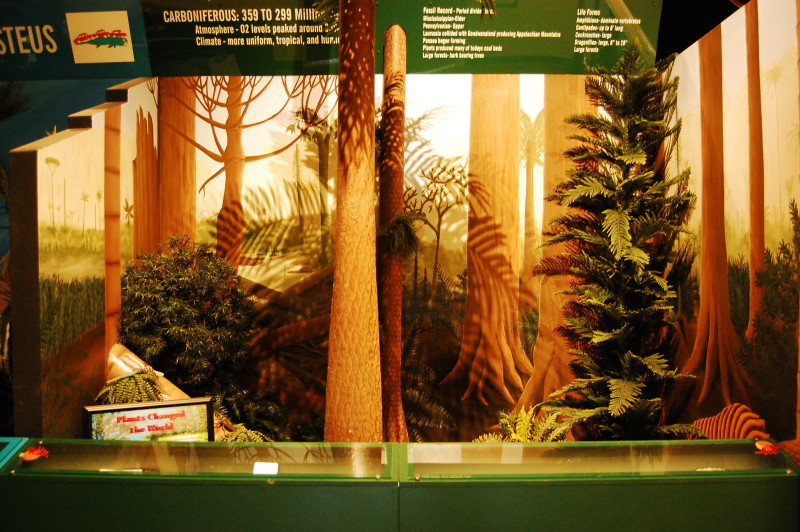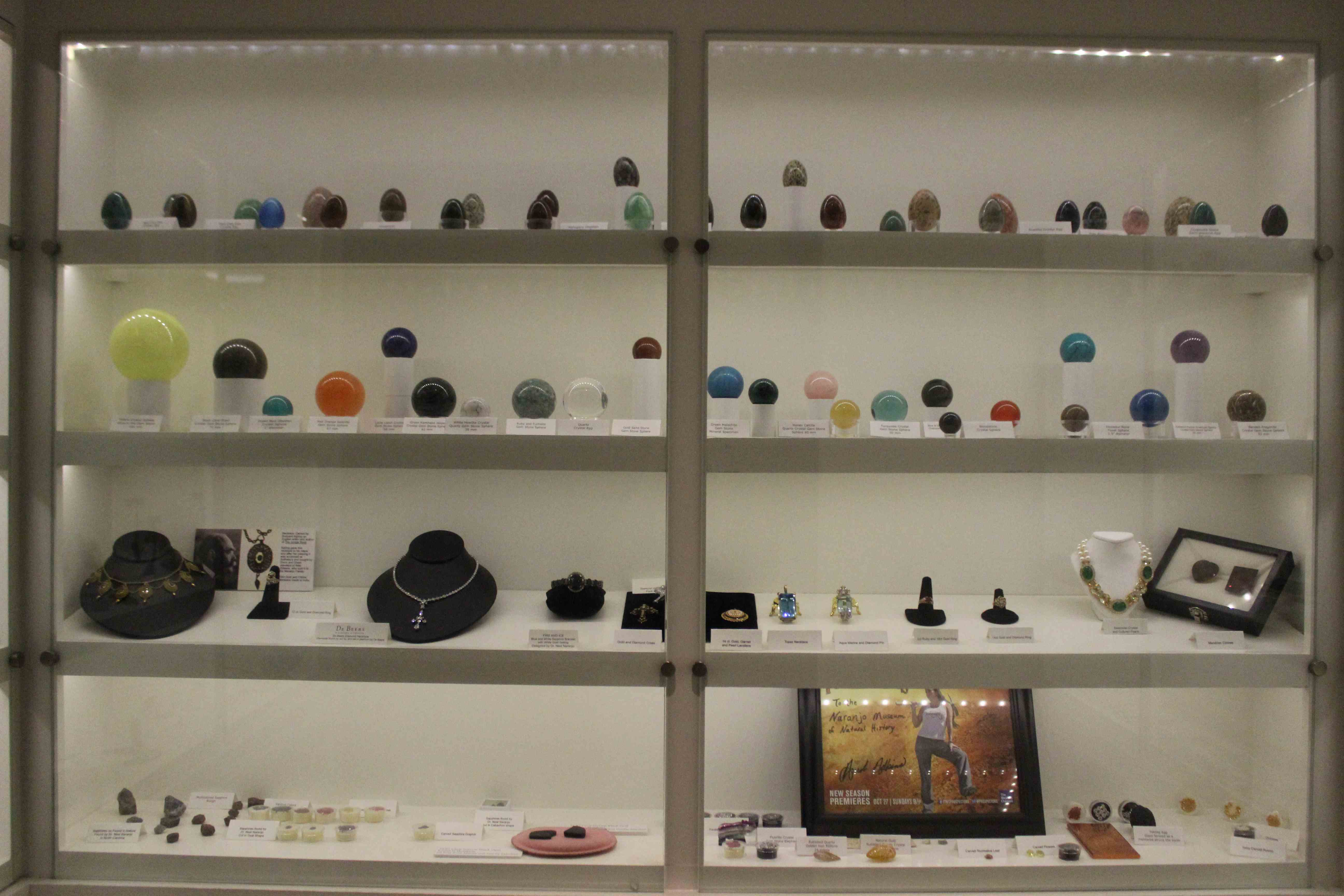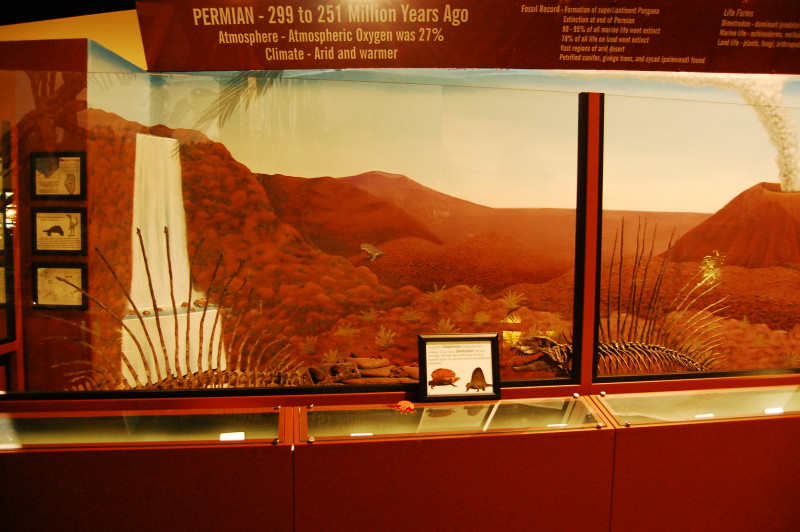The Naranjo Museum has on display one of the best collections of Precambrian fossils.
The Precambrian period experienced a harsh environment. The oxygen levels were extremely low and
the landscape was constantly changing. Volcanic eruptions and the plates shifting made it hard for life forms to survive. During this time period creatures were primitive and lacked eyes due to the dark oceans. Stromatolites oxygenated the earth and still exist today in some areas. All the land masses formed the supercontinent Gondwana.
The oldest rock is from the Precambrian period. It is called Acasta Gneiss and is 4.2 billion years old. It is believed to be the oldest known fragment of the earth’s crust. The oldest mineral known is Zircon and it is 4.4 billion years old.
In the next case you can find pieces of fossilized Stromatolites. Stromatolites oxygenated the earth during the Precambrian period over 3 billion years ago. Layers of Cyanobacteria settled on top of each other. These are considered to be one of the first life forms on earth. Through photosynthesis they released oxygen into the air and eventually the earth had enough oxygen to sustain life.
The first oxygen that the Stromatolites released fell into the ocean and settled forming the rocks that
we know today as Banded Iron. Banded Iron is repeated layers of silver and black iron oxide magnetite that accumulated after the earth was oxygenated by the Stromatolites.



